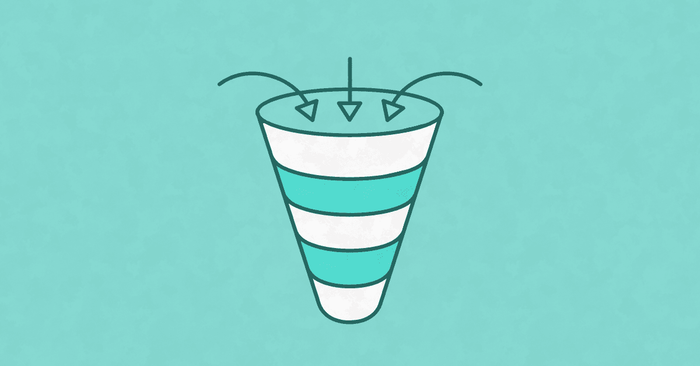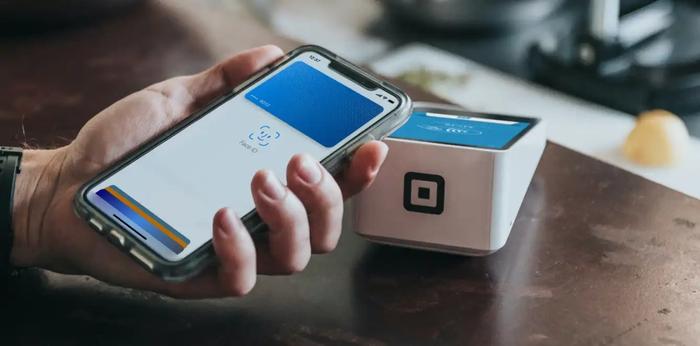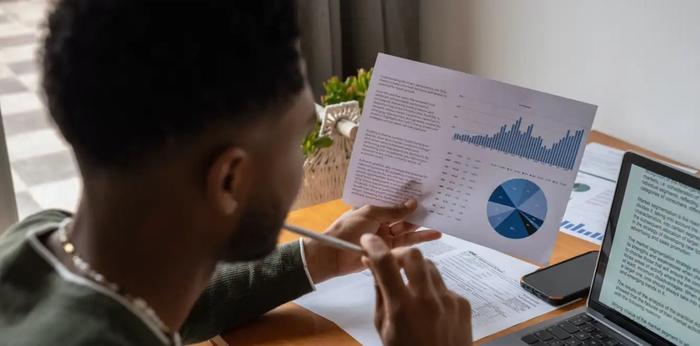High-ticket sales involve a lot of time and effort to grow. You need to create an attractive offer, put together a persuasive sales strategy, and build trust with potential customers.
Time to leave low-ticket strategies behind and start selling high-ticket items with a new approach. Everything you need to know on how to sell big and win even bigger.
What are high ticket sales?
High ticket sales involve selling products or services at a high price (usually over $1,000). Most of these transactions require buyers to make a large financial commitment.
Examples of high-ticket items include luxury cars, real estate properties, high-fashion clothing, and specialized services.
Regular vs. high-ticket sales funnel
High-ticket sales aren't bought frequently. Many of them are even once-in-a-lifetime purchases.
Because of this, high-priced items are often the most abandoned purchases. Most shoppers simply don't complete the checkout process as they need more time to carefully consider their decision.
The good news is that because each transaction generates substantial revenue, the company can remain profitable even with a smaller customer base. Still, the customer journey is longer and requires a different approach compared to regular sales.

So, what sets apart a high-ticket sales funnel from a regular one?
- Focused target audience – High-ticket funnels aim to attract a select audience, typically individuals or businesses with higher budgets. Efforts are focused on attracting these qualified leads.
- Higher acquisition costs – High-ticket clients can cost more than regular ones because they require more personal attention. However, the potential for higher profit margins justifies the expense.
- Longer sales cycle – Higher product prices mean a longer customer journey from awareness to purchase.
7 secrets to selling high-ticket sales
We’ve put together some expert tips on how to be successful with high ticket sales. Take a look and see how to focus your efforts and improve the practice of selling.
1. Understand a high-ticket client inside out
You need to know your product, your market, and your customers like the back of your hand. These allow you to find the unique selling point (USP) of your product.
But how can you reach the right audience if you cannot take a mass approach? High-ticket sales are all about trust. Your customers need to feel confident that they’re making the right decision, and that starts with you.
Use surveys and social listening tools to conduct research. Doing so allows you to get enough information to create customer personas (two or three are enough) and take a strategic view to understand your prospective customer experiences, pain points, and motivations.
Tip! Be wary of confirmation bias. This means that you may create personas based on your pre-existing assumptions. If you want to avoid this, conduct research and test your personas against actual buyers.
The result? Delivering unique value in the market to demanding customers and maintaining a customer-centric approach throughout the sales process.
2. Make your high-ticket product offer irresistible

People want to know what they’re getting for their money, especially if you offer expensive goods.
Make it clear how your product or service solves a problem or will improve the customer’s life. For example, if you have a coaching business and you’re offering a high-end training program, don’t just list the sessions, talk about the transformation they’ll experience and its long-term benefits.
What are the other tactics to make your customers feel good about their purchase?
- Use testimonials, social proof, case studies, or before-and-after photos to show the real impact of your product. Let your happy customers do the talking and show potential buyers what they can expect.
- People love feeling like they’re part of something special. If you can, make your offer limited in some way – perhaps you only take on a certain number of clients at once or your product is in limited supply. This creates a fear of missing out and makes your offer more exclusive.
- Break down the payment into smaller, more manageable chunks if possible. Provide a payment plan instead of a one-off transaction, and make the buying process as simple and straightforward as possible.
3. Strategically price your high ticket item
It's not always about how much you charge for your product or service. What matters is how much value your customers perceive it to have.
Pricing is a powerful tool. Get it right, and you can attract the right customers, boost your sales, and grow your business.
When setting prices, keep in mind the following series of steps:
Know your numbers
What does it cost to produce your product or deliver your service? Make sure your price covers your costs and leaves room for profit. For example, if you’re selling handmade furniture, take labor, materials, and overheads into account.
Research your market
Look at what similar high-value products or services are going for. You don’t want to price yourself out of the market, but it’s also reasonable not to undervalue what you’re offering. So, if your coaching program offers more personalized support than your competitor’s, it makes sense to charge more.
Offer different price points
If possible, make your product or service available at different price levels in order to attract a broader range of customers and increase your chances of making high-ticket sales. The cost of your final product could depend on a variety of factors, e.g., the type of wood a client chooses for a standing desk.
Let's take a look at an example.
Test and adjust
Don’t be afraid to experiment with your pricing. Try out different pricing models and see how your customers respond. If sales are slow, it might be time to adjust. If customers are snapping up your offer, you might be able to charge even more.
4. Prioritize exceptional customer service

Crown & Caliber, a company that sells watches from brands like Rolex and Cartier, believes that luxury is all about comfort and honesty.
And according to the brand's CEO, Hamilton Powell, “Excellent customer service is the best way to put a customer at ease.”
If you’re selling high-ticket items, you have no choice but to do this. Your team should be responsive, knowledgeable, and ready to go above and beyond.
When a customer reaches out, make sure someone from your team gets back to them ASAP. Even a quick message to say you’ve received their inquiry and will get back to them as soon as possible can make a world of difference.
If a client is having an issue with a product, don’t just offer a refund or replacement – throw in something extra to make up for the inconvenience, such as a discount off their next purchase or a small freebie. The goal is to turn a negative experience into a positive one and overcome sales objections.
The secret of exceptional customer service lies in one main aspect: remember the little details about your customers and their preferences.
Think about it: when someone recalls your favorite coffee order or asks about your dog by name, it feels pretty good. It’s the same with your clients. When a customer feels recognized, this creates a connection that goes beyond the transactional. It shows that you see them as an individual, not just a sale.
Tip! Use customer relationship management (CRM) software to keep track of all these customer details. Capsule is like a cheat sheet for your sales calls. You can store information about your products, take notes on customer interactions, and even set reminders for follow-up emails or calls.
CRM tools help you stay on top of your game and ensure you’re giving your customers the service they need to make a big purchase.
5. Automate the sales process to close the deal faster
If you sell high-ticket products, automating your sales process isn't just nice to have – it's a must. Why? There are many other impactful activities that high-ticket salespeople should focus on and automation helps them use their time wisely.
Consider all of the repetitive tasks that eat up your day – sending follow-up emails, scheduling calls, or updating your CRM. Now imagine if all those tasks just took care of themselves, that's what automation can do for you.
With the right tools in place, you can free up your marketing and sales teams’ workloads to focus on what really matters – connecting with your customers and closing deals.
But it’s not just about that. Sales automation also helps eliminate manual errors that can slip through the cracks when you're handling a million things at once. And in the world of high-ticket sales, even a small mistake can cost you big.
What are the tasks to automate in high-ticket sales?
- Lead generation – Use tools to capture high-ticket leads from your website or social media automatically. For example, set up a form on your website where potential customers can request more information. Once they fill it out, automation can add them to your CRM and send them a welcome email, all without you lifting a finger. If you need to find verified business emails for outbound or follow-up, a solid email finder is a smart addition to your sales stack. It helps high-ticket sales teams quickly find and verify decision-makers’ contact details, so you spend less time searching and more time selling.
- Email marketing – Create email sequences for different stages of your sales funnel. For new leads, you might have a sequence that introduces your business and showcases your high-ticket product or service. For leads that have gone cold, you could have a re-engagement sequence. -Automate scheduling – Use scheduling tools to let prospects book calls or meetings directly in your calendar. This cuts out the back-and-forth and makes it easy for potential customers to get in touch with you.
- Lead scoring – Implement an automated lead scoring system to prioritize prospects based on their engagement and chance of conversion. This helps sales teams focus their efforts on the most promising leads.
A crucial component of automating high-ticket sales tasks efficiently is integration. When your software solutions communicate seamlessly with one another, data flows effortlessly and every part of your sales process stays in sync.
Tip! Integrate your CRM with the tools you already use to create one single management hub. There's no need to worry about how to do this if you choose the right tool. Learn more about CRM integrations.
6. Focus on long-term relationships
People are more likely to buy from people they trust, but trust takes time to build. So, unlike with low-ticket sales, invest time in nurturing your existing clients. Check in with them, ask for their feedback, and show them you’re genuinely interested in their success, not just their money.
Take high-end consulting services as an example. You’ve just wrapped up a big project with a client. The invoice is paid and the work is done, but your job? It’s far from over. Now’s the time to really solidify that relationship.
Reach out and ask them how things are going. Are they seeing the results they hoped for? Is there anything more you can do to help? Maybe there’s an additional resource you can provide or some follow-up advice to help them maximize their investment.
This kind of follow up shows that you care about the long-term impact of your work.
And sure, it takes time and effort. But the payoff is worthwhile because when your customers trust you, they come back to you and refer you to others. They become not just ideal customers but brand advocates for your business.
Discover more on how to build relationships in sales in order to close more deals.
7. Measure and scale up to see the big picture

Always keep your eye on the ball and the bigger picture. You shouldn't just celebrate when you make a big sale or brush it off when things don't go according to plan – your business needs a closer look.
Once you’ve got a handle on what’s working (and what’s not), it’s time to double down and optimize. Put more energy into the strategies that are bringing in the most revenue.
If hosting webinars is your sweet spot, then plan more in the future. If a specific type of client is consistently bringing in a lot of sales, focus on attracting more of them.
How should high-ticket sales reps measure their performance?
- Track revenue and average deal size – High-ticket sales are about fewer customers and quality over quantity. Check that you don't just close deals but close deals that significantly contribute to the revenue of the company.
- Monitor conversion rates – Pay close attention to your conversion rate, which is the percentage of leads that turn into actual sales. This metric directly reflects your effectiveness in persuading potential clients to purchase.
- Evaluate sales cycle length – Assess the length of your sales cycle from initial contact to closing. For high-ticket sales, the cycle might be longer than normal, yet an excessively long cycle could indicate inefficiencies in your sales process. Strive for a balanced cycle.
8. Leverage customer referrals
A powerful but often underutilized strategy in high ticket sales is leveraging customer referrals. Satisfied clients can become your best advocates, sharing their positive experiences with their network. This not only brings in new high-quality leads but also builds credibility and trust.
Encourage your happy customers to refer others by offering incentives, such as discounts on future purchases or exclusive perks. A referral from a satisfied customer can carry significant weight, especially in big ticket sales where trust is crucial. Implementing a structured referral program can amplify your reach and help close more high-ticket sales effectively.
Your sales team should actively seek referrals after closing a high ticket product sale. Asking satisfied customers for referrals can be a natural part of the sales process. When high ticket sales refer to friends and colleagues, it often leads to high ticket purchases from new customers.
A structured referral program for selling high ticket products can include personalized thank-you notes, referral bonuses, or exclusive access to new products. These incentives not only motivate customers to refer others but also enhance customer satisfaction and loyalty.
In high ticket selling, leveraging customer referrals turns satisfied clients into brand ambassadors. Their personal recommendations can help in selling high value products to a wider audience. This strategy taps into the trust and credibility that existing customers have built with new prospects, making high ticket selling more effective and efficient.
Final thoughts on how to sell expensive products
A premium sales pitch requires a shift in mindset and strategy. Unlike the quick wins of low-ticket sales, you need to demonstrate value and build trust.
Here are the key takeaways:
- Show the high value of your products or services and tailor your sales script to highlight this.
- When closing high-ticket deals, make your offer compelling and irresistible.
- Aim to transform customers into advocates and use word-of-mouth marketing to encourage repeat business.
- Equip your sales team with the necessary tools and knowledge, then watch as your high-ticket sales efforts pay off.
Discover how Capsule can help your sales team maintain a competitive edge. Try Capsule free for 14 days and see how it can help you and your business.
FAQ
A high-ticket sales funnel is a strategic process designed to attract, nurture, and convert leads into customers for high-value products or services, typically with a significant price point. Unlike low-ticket sales funnels, which may focus on volume and quicker conversions, high-ticket sales funnels emphasize building deeper relationships with potential clients, understanding their specific pain points, and providing personalized solutions. The process involves more touchpoints and a focus on quality interactions to ensure trust and confidence in the high investment.
High-ticket items are considered more challenging to sell due to their higher cost, which requires a greater commitment from the buyer. Sales reps can overcome these challenges by focusing on the value and transformation the product or service offers, addressing specific pain points with tailored solutions, and employing digital marketing strategies to build trust and authority. Effective communication and demonstrating a clear understanding of the client's needs are crucial in closing high-ticket sales.
Businesses can attract high-ticket customers or clients online by creating premium content that positions them as experts in their field, leveraging digital marketing techniques such as targeted advertising, SEO, and social media engagement. Offering free, valuable resources like webinars, online courses, or ebooks can also help in attracting high-value clients by showcasing the business's expertise and the potential value of their high ticket offerings.
Understanding customer pain points plays a critical role in selling high-ticket items because it allows sales reps to tailor their pitch and demonstrate how their product or service uniquely addresses those issues. High-ticket clients are looking for solutions that offer significant value and can alleviate their specific challenges. By effectively communicating how a high-ticket item can solve these pain points, sales reps can build a stronger case for the investment.
Profit margins for high ticket sales are generally higher than those for low ticket sales because the higher price point of high ticket items can cover costs and leave a substantial margin even with fewer sales. While low-ticket items may require high-volume sales to achieve significant profits, high-ticket sales focus on maximizing value from each transaction, leading to potentially greater profitability with fewer customers.
Examples of high-ticket products or services include luxury goods, specialized equipment, premium consulting services, and advanced online courses. These are marketed through strategies that highlight their exclusivity, superior quality, and the exceptional value they provide. Marketing efforts often involve personalized outreach, content marketing that showcases expertise, and leveraging testimonials or case studies to build trust and demonstrate results.
Yes, digital marketing can effectively promote high-ticket items by targeting specific audiences likely to be interested in high-value deals. Successful techniques include content marketing that establishes thought leadership, paid advertising campaigns targeted at high-ticket clients, email marketing sequences that nurture leads, and social media strategies that engage and build relationships with potential customers. The key is to convey the unique value and benefits of the high-ticket items to the right audience.
High ticket closing is the process of converting a lead into a customer for a high-value product or service. Essential skills for sales reps in this area include strong communication and negotiation abilities, empathy to understand and address client concerns, patience to nurture leads through a longer sales cycle, and the confidence to ask for and justify a high investment. A deep understanding of the product or service and its impact on the customer's life or business is also crucial for successful high ticket closing.




